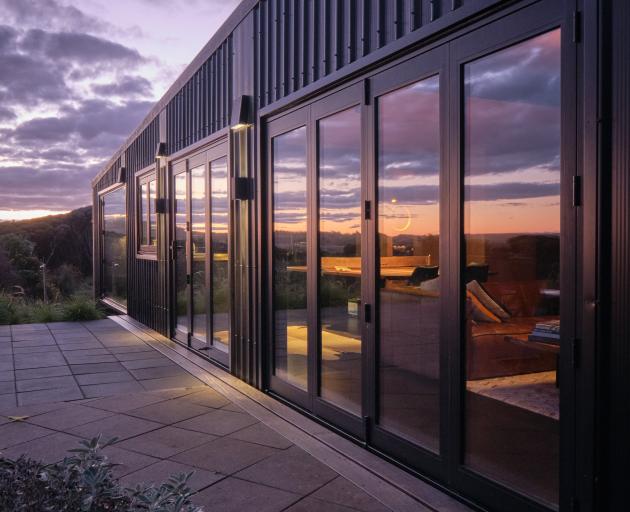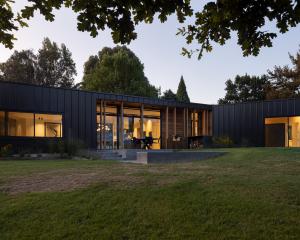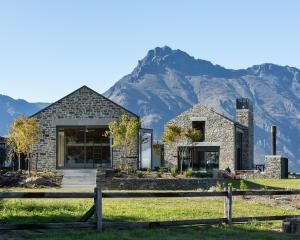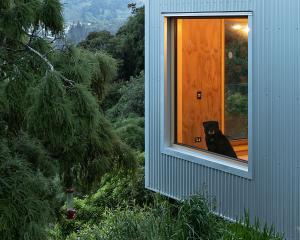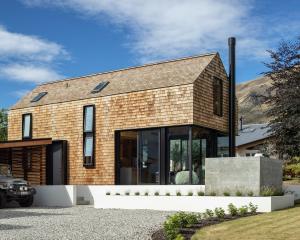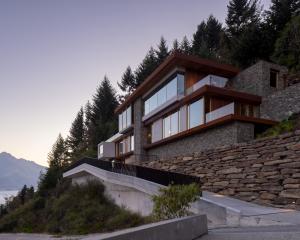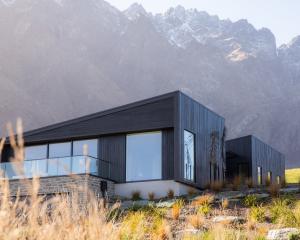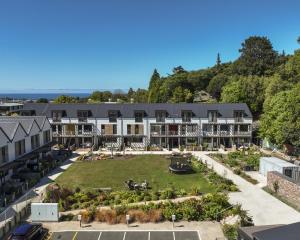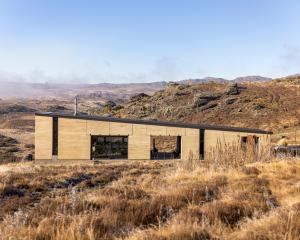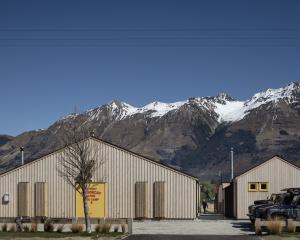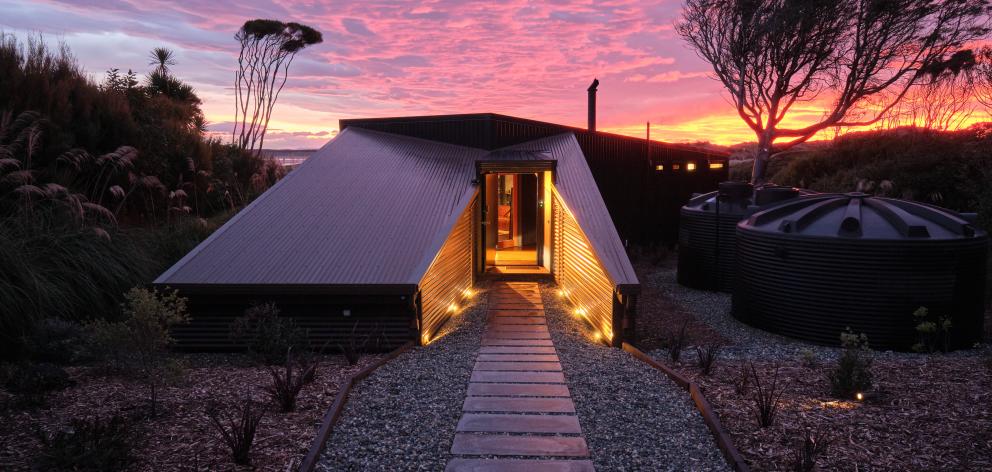
A house unlike any other in a small beachside settlement wins plaudits for its unconventional architecture
The challenges inherent in designing any house are significant. But when it came to designing a holiday home halfway between Invercargill and Bluff, architect Stacey Farrell decided to up the ante on the usual topographical limitations, zoning restrictions and budget constraints, with a few additional design challenges.
The first was to do more with less when creating the coastal two-bedroom home. Fewer materials, fewer refuse created in the construction process, and fewer unnecessary expenses were the tenets she applied.
“It was all about reduce, reduce, reduce,” explains Farrell. “That’s about what you need, not what you want; about reducing maintenance and increasing permanence.”
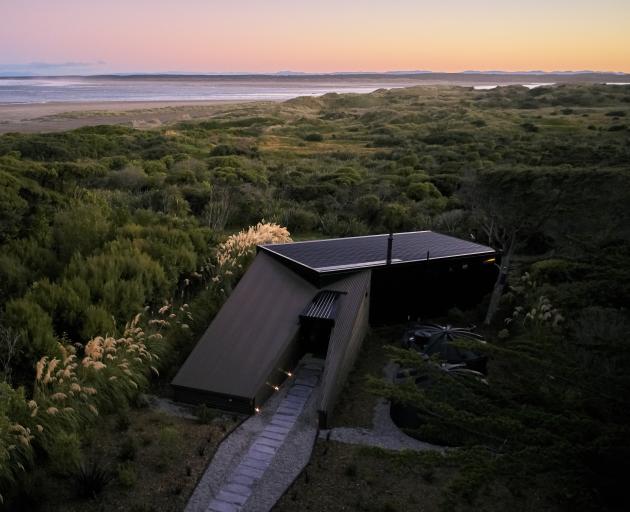
Farrell’s clients had owned the north-facing section 500m from the beach in the quiet settlement of Omaui for a number of years before building. They wanted a simple home that protected them from the roar of the wind and the ocean waves, cold winters and warm summers, and a house that was small but flexible in who it could accommodate.
To get to grips with how she might design the perfect dwelling not only for her clients, but for the land, Farrell visited the site many times, camping overnight on the section.
“I’d be climbing up trees to understand the levels of the section,” she says. “I got to know how cold it can be and how hot, and I began to understand that the house had to respond to weather extremes.”
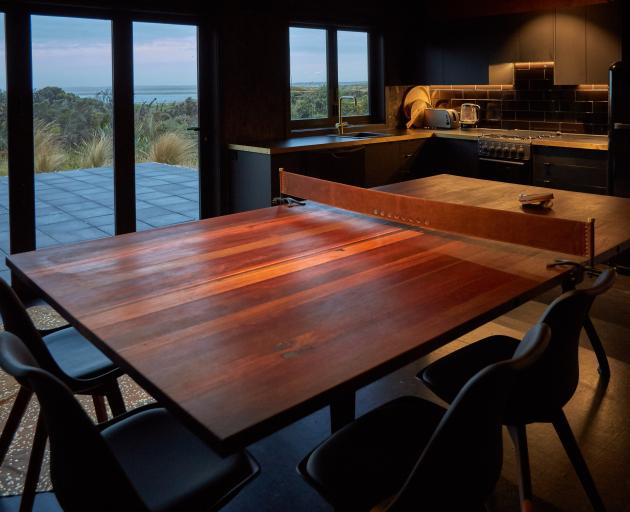
A dwelling began to take shape: a low, grounded profile, composed of two wedge-shaped forms that were mindful of their impact on the environment. Their unusual, angular shapes and dark corrugated iron cladding lend the home the look of a modern fortification that protects its inhabitants from the elements. Two colourways differentiate the halves of the home and reference the natural environs.
“Two distinct built forms collide on the site,” the Queenstown-based architect explains. “That’s about the land and the elements; the change of water to land, the waves coming across. To embody that, the higher, taller form is on a lean, buffered by the wind. The brown form collides like the waves hitting the shore.”
From the street, you can see the house, which is one of very few new builds in the area, but from the beach, the house is hidden, intentionally nestled into the land, says Farrell: “I didn’t want it to pop out of the dunes. I wanted to tuck it away.”
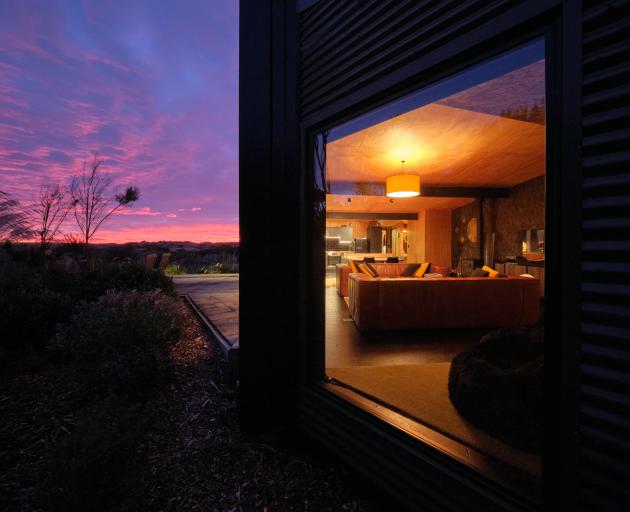
From the house, which is built on timber poles so, if sea levels rise eventually, it can be picked up and moved to higher ground, there are views of the dunes and sea. Inside, Farrell kept the floor plan simple, and infused it with passive house methodologies, as part of her mandate to do more with less.
Thermally efficient structural insulated (SIP) panels were specified for many of the walls. Thanks to the insulation lining in between the panels, the energy efficiency of the house is improved. The panels were darkened with a wood dye, rather than painted or stained, so that they are low maintenance. Because they are textured, knocks and bumps are less likely to be seen and there’s no need for restopping, replastering or repainting. Similarly, plywood panels in other areas have been oiled rather than painted.
A simple ventilation system manages moisture levels and air quality. “It’s a European standard of building,” says Farrell. “Living creates condensation, just from breathing, cooking, drying our clothes inside, so passive housing addresses that, introduces and regulates fresh air inside, and then reduces the heating required. This ventilation system means that as the air comes into the house, it’s getting heated as it comes through a honeycomb membrane.”
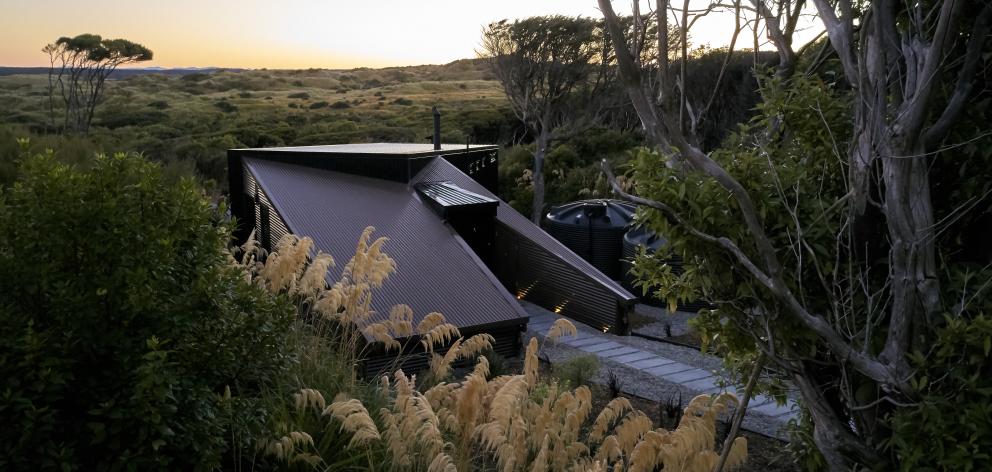
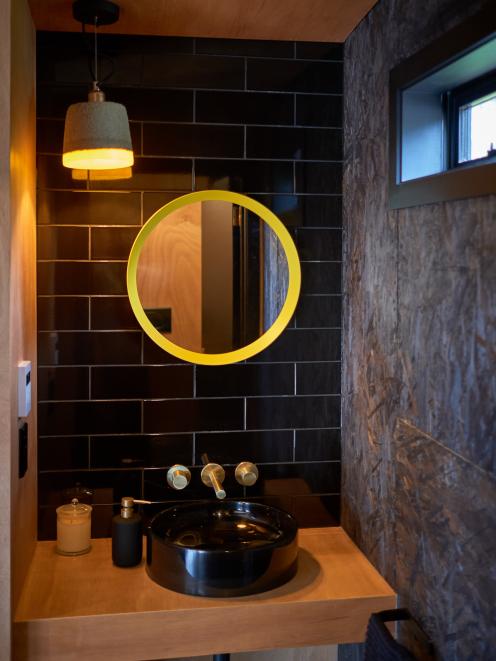
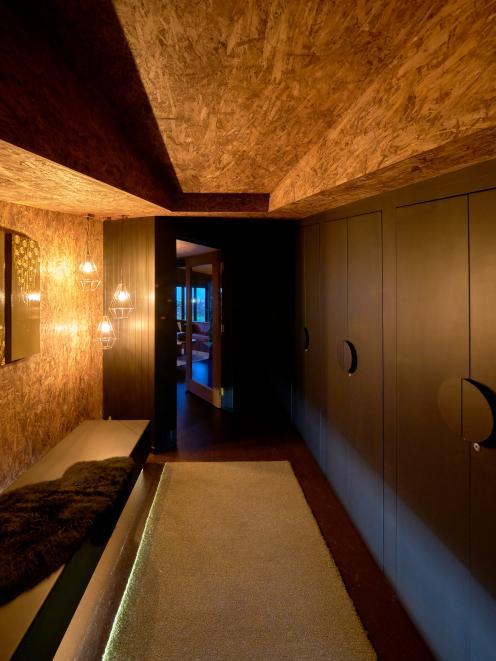
Farrell restricted the colours used in the interior, setting herself the goal of a home free of any white fixtures or fittings. Dark joinery and furnishings — including a table tennis table that doubles as the dining table — create layers of richness in the spaces.
“Everyone is so scared of using dark colours,” says Farrell. “Here, the texture and the ambiance and the feel of using darker colours and textures and different materials is really successful. It required a lot of painting of niggly things that come in a standard white, including distribution boards, the bottle trap under the basin. And the one thing we couldn’t resolve was the toilet.”
The finished home, and its architect, have been rewarded for these bold design decisions: the house has been featured in Taschen’s Homes for our Time 2 (selected by Philip Jodidio), Cape to Bluff by Simon Devitt, and Small Holiday Houses by Catherine Foster. It was HOME’s Green Home of the Year award, was a finalist for a World Architecture Network Small Spaces award, TIDA New Zealand’s Architect New Home of the Year, received a Te Kāhui Whaihanga New Zealand Institute of Architects Local Award, and a Resene Colour Award.
“A true crib, with a contemporary twist, this small house at the bottom of the world is an exercise in creativity and integrity,” said the judges of the Te Kāhui Whaihanga award, describing it as “.. a home that is dedicated to cosy moments and enjoyment of the outdoors.”
“There’s nothing like it in the area,” says Farrell when describing the home. “You come along a metal road and there’s that fin of the converging entry greeting you. When you get into the living space, it opens up again and there’s a true sense of space.”
